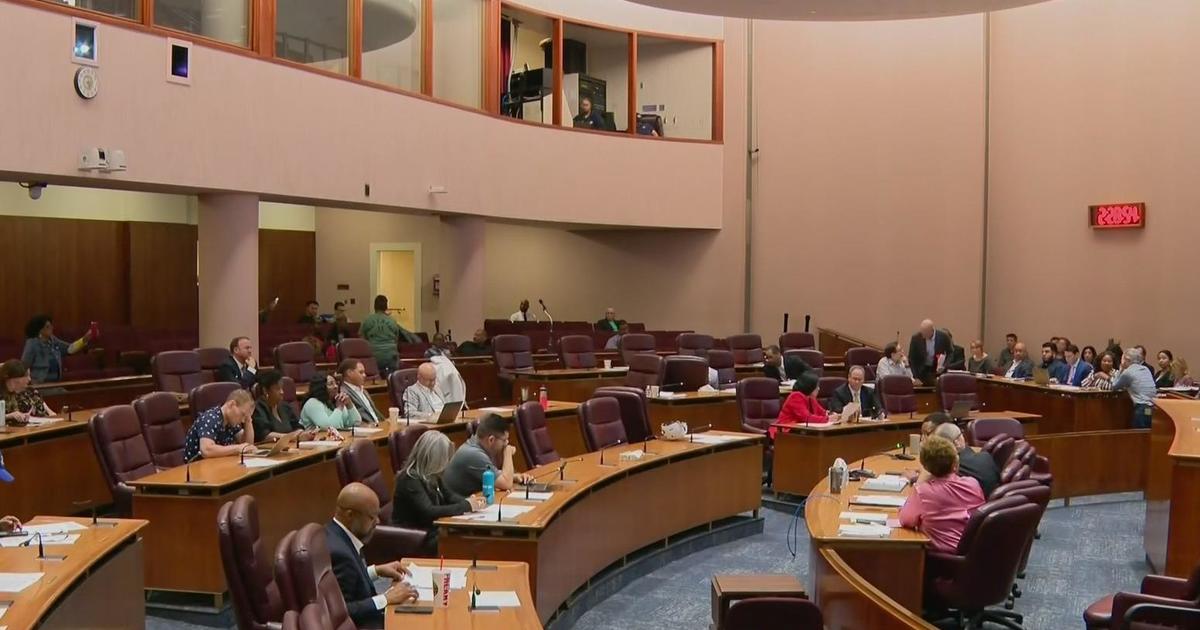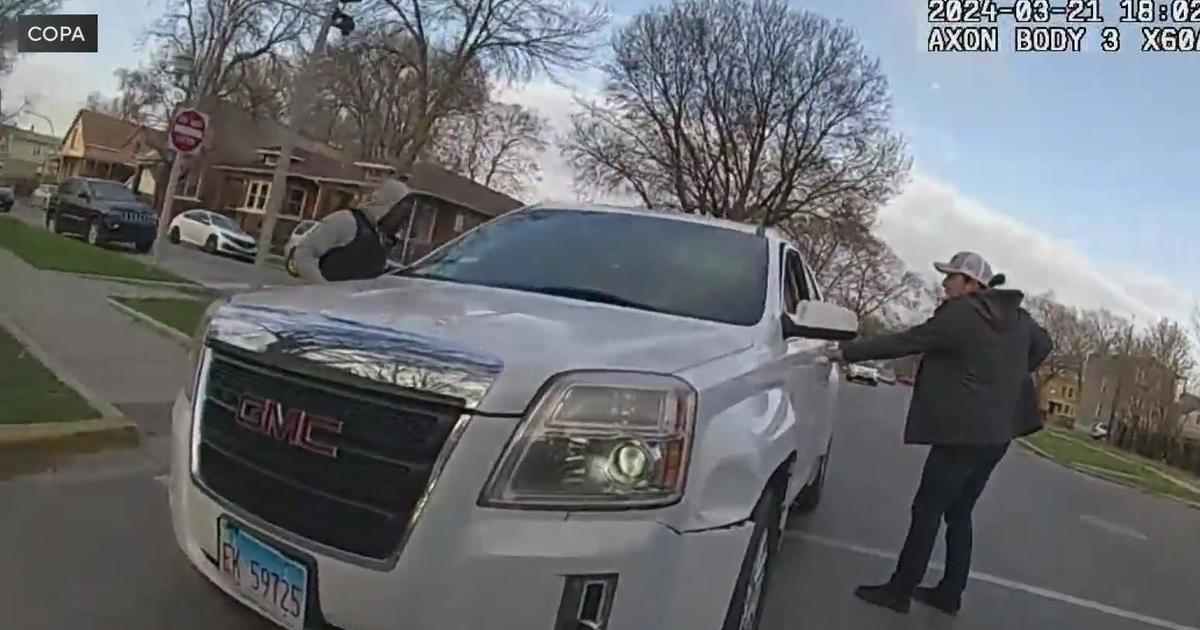ShotSpotter Gunshot Detection Technology Has Become A Crucial Police Tool In Chicago, But Is It Worth The $33 Million The City Is Paying?
CHICAGO (CBS) -- CBS 2 has dug into Chicago's contract with ShotSpotter - a high-tech gunshot detection system that can alert police of potential gunfire in seconds.
With accusations that it doesn't work, and that it targets certain communities, attorneys with the MacArthur Justice Center at Northwestern University on Monday filed paperwork asking a Cook County judge to examine how trustworthy the system is for court cases.
The Chicago Police Department is the company's largest client, and the city's $33 million contract is due for renewal this summer. CBS 2 Investigator Megan Hickey is asking, is it worth the price?
By now, you may have noticed Chicago's ShotSpotter sensors. They are deployed over 117 square miles of the city, spanning 12 of the city's 22 police districts.
ShotSpotter uses a series of microphones and sensors to detect gunfire. And in recent years, the technology has become a crucial tool for the Chicago Police Department.
"Because ShotSpotter is so accurate in real time, the officers could actually - they arrive at the scene somewhere between five to seven minutes before a 911 call," then-police Supt. Eddie Johnson said in 2017.
The technology has helped law enforcement get victims help sooner, identify witnesses, and collect important evidence. But it has also been the genesis for some dangerous, even tragic, encounters.
On a cold December night in 2018, a 26-year-old man named Edward Brown fired test shots into the air near the railroad tracks at near 101st Street and Dauphin Avenue in the Rosemoor neighborhood.
ShotSpotter picked up the sound of the shots, and Chicago Police officers Conrad Gary and Eduardo Marmalejo were dispatched to the scene. They ended up being struck and killed instantly by a South Shore Line train that they did not hear coming.
ShotSpotter also brought police to an alley near 24th Street and Sawyer Avenue in Little Village on early on the morning of Monday, March 29.
Within five minutes of the 2:36 a.m. alert, Officer Eric Stillman shot and killed 13-year-old Adam Toledo. A still frame of Toledo's hands up in the air right before the shot made ripples across the country.
So here's the question - while it can be an incredibly useful tool, does ShotSpotter create more opportunities for dangerous and sometimes tragic outcomes? Attorney Jonathan Manes of the MacArthur Justice Center says yes.
"It's clear that the system creates a sort of powder keg situation for police," Manes said.
Manes' team analyzed Office of Emergency Management and Communications ShotSpotter data from July 2019 through April 2021, and found that well over 85 percent of ShotSpotter-initiated police deployments in Chicago turn up no evidence of any reportable incident or crime - let alone gun crime.
"So the police are going into that situation expecting to find somebody who is armed and has just fired a gun," Manes said, "and if nine times out of 10, they end up finding nothing, that creates a pretty dangerous situation for anybody who happens to be in the vicinity."
Manes also notes that the majority of ShotSpotter cameras are installed in neighborhoods with largely Black and Latinx populations.
"It exacerbates the sort of racialized, aggressive patterns of policing," Manes said.
The Office of the Cook County Public Defender has also probed ShotSpotter's effectiveness in Chicago - citing a lack of independent testing into the rate of false positives. That is why their lawyers have recently filed legal challenges to the admissibility of ShotSpotter evidence in criminal trials.
Two other studies - one in St. Louis and another in Philadelphia - found that gunshot detection systems do not result in reductions in violent crime.
Hickey: "So in your opinion, do you think that the ShotSpotter system is worth $33 million of taxpayer money?"
Manes: "I think it's hard to justify spending $33 million on a tool that sends police hunting for nonexistent gunfire almost nine times out of 10."
But that decision won't be up to the researchers. It's in the hands of the Chicago City Council.
Ald. Christopher Taliaferro (29th) is the chair of the Public Safety Committee.
"We can't blame ShotSpotter for what happened to Mr. Toledo," Taliaferro said. "You know, we do need police reform, and we are still in the process of reforming our police department."
Taliaferro, a former police officer himself, says the ShotSpotter technology performed as it should have the night that Adam Toledo was killed. It is what happened afterward that should be scrutinized, he said.
Hickey: "Do you believe ShotSpotter is worth the taxpayer money?"
Taliaferro: "I do. I do believe it, because we're saving lives with it. The technology also aids our police department in being able to attend victims much sooner."
Mayor Lori Lightfoot was in agreement with Taliaferro on Monday, believing the benefits outweigh the drawbacks highlighted by the MacArthur Justice Center.
"Obviously, like with any contract, we need to make sure that we are continually evaluating it and making sure that we're getting the best bang for our buck," Lightfoot said.
Chicago Police declined to make anyone available for an interview on this topic.
But in a statement, the CPD said:
"In order to reduce gun violence, knowing where it occurs is crucial. ShotSpotter has detected hundreds of shootings that would have otherwise gone unreported. The Chicago Police Department's expansion of ShotSpotter is helping us reduce crime and make our neighborhoods safer.
"With ShotSpotter, CPD receives real-time alerts of detected gunfire enabling patrol officers to arrive at a precise location of a shooting event quickly. Instead of relying on the historically low rate of 911 calls, law enforcement can respond more quickly to aid victims, identify witnesses and collect forensic evidence. The system gives police the opportunity to reassure communities that law enforcement is there to serve and protect them and helps to build bridges with residents who wish to remain anonymous."
ShotSpotter has contract with about 100 U.S. cities - including Miami, San Francisco, Las Vegas, and New York.
ShotSpotter also declined an on-camera interview. But we sent along the MacArthur Justice Center's findings well in advance of running this story.
A spokesperson did not comment on any of the findings specifically, but did issue this statement:
"ShotSpotter's highly effective technology, with a 97% accuracy rating nationwide, is a vital tool for law enforcement to render rapid assistance to gun violence victims, reduce violent crime, helping to bring peace to communities suffering from gun violence.
"ShotSpotter technology is incredibly accurate, sending officers to the exact location of gunfire incidents within a few minutes, finding victims who need assistance, getting them medical aid faster, saving lives.
"Our technology fills the gap when nationally, nearly 80% of gunfire isn't reported to 911, deploying officers to crime in real-time, saving lives."



